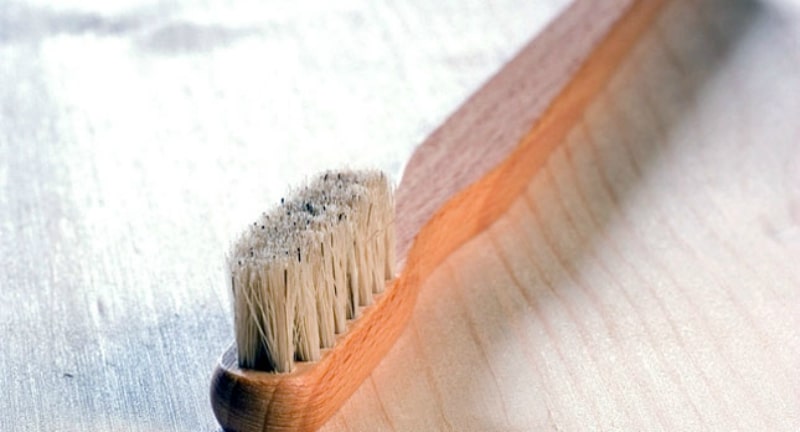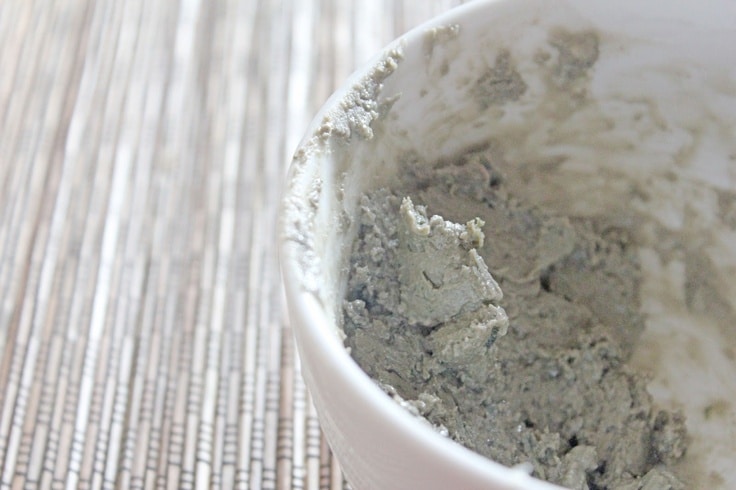DIY Paleo Toothpaste

Paleo Toothpaste with Bentonite Clay: A Fluoride-Free, Remineralizing DIY Guide
This is a fluoride-free, paleo toothpaste based on bentonite clay, calcium powder, baking soda, sea salt, natural sweetener, and mint extract, with optional clove or cinnamon. It can be used as a dry tooth powder, as a coconut-oil paste, or as a squeezable version for children. The post explains the rationale for choosing homemade oral-care products, outlines preparation methods, addresses storage and hygiene, and provides safety notes and answers to common questions. From the Journal of the American Dental Association: “Conclusions. There is weak and inconsistent evidence that the use of fluoride supplements prevents dental caries in primary teeth.” and “Mild-to-moderate dental fluorosis is a significant side effect.”

Paleo Toothpaste Recipe: Ingredient matrix
| Ingredient | Amount |
|---|---|
| Bentonite clay | 4 tablespoons |
| Calcium powder | 3 tablespoons |
| Baking soda | 2 tablespoons |
| Fine sea salt | A pinch |
| Organic liquid stevia | 8 drops |
| Organic spearmint or peppermint extract | 1 teaspoon |
| Optional spices | Ground cloves or ground cinnamon to taste |
Preparation and texture options
Begin by combining the dry powders in a clean non-metal bowl, taking care to handle bentonite clay with a plastic or wooden spoon. Add the stevia and your preferred mint extract and mix until the blend looks uniform. At this point, the preparation can be used in three different formats. As a tooth powder, leave the mixture dry and tap a little onto a damp toothbrush or into your palm before brushing. For a paste, fold in room-temperature coconut oil with a plastic utensil until you reach a spreadable consistency, then transfer to a glass jar or BPA-free container, keeping the lid closed between uses to limit moisture and contamination. For a squeezable child-friendly version, half-fill a BPA-free squeeze tube with the paste, add a few tablespoons of water, and allow time for the clay to hydrate and swell, which produces a looser, gooier consistency that dispenses cleanly without dipping shared brushes into a jar.
Why a Paleo Toothpaste can be a logical choice
Many families begin with nutrition and later consider cumulative exposures from hygiene and cleaning products. Shampoos, lotions, soaps, and cosmetics can contain grain-derived additives that may be undesirable for those who avoid gluten or cross-reactive proteins, and the ingredient labels often use chemical nomenclature that conceals origin. The skin is a protective organ, yet topical absorption does occur for a range of substances, which raises a reasonable preference in some households to simplify inputs and select known ingredients. Household products may also include chemicals that manufacturers are not required to disclose fully when covered under proprietary fragrance or colorant listings, which complicates consumer choice. Concerns about conventional toothpaste commonly center on fluoride exposure in children and on cumulative ingestion risk in households that prefer a minimal-additive approach. A homemade paste with simple constituents lets a family control flavor, abrasivity, and excipients while aligning with broader dietary and lifestyle goals.
Practical results and lessons learned
Users who transition to simpler personal-care products often report qualitative improvements that mirror their dietary changes. In one family experience, removal of commercial shampoos coincided with resolution of persistent dry, itchy scalp in both a parent and a child, with symptoms recurring upon short reintroductions and resolving again after returning to the simplified routine. After replacing commercial toothpaste with the bentonite-based paste, the same household noted improved gum scores at dental cleanings, visible whitening, and hardening of previously soft enamel areas in children, while clinicians asked what had changed. These outcomes are anecdotal and individual responses vary, yet they illustrate why some families continue with a simplified oral-care regimen.
Usage guidance, storage, and hygiene
Use a pea-sized amount per brushing and rinse thoroughly. Keep water out of the storage container to preserve texture and limit microbial growth; a dedicated spatula or pump helps. Store the powder or paste at room temperature away from humidity, and prepare smaller batches if several family members share a single product. For the squeezable version, refresh the tube periodically since clay continues to hydrate over time, which can thin the texture.
Safety notes and sensible cautions
Bentonite clay can bind metals and moisture; always avoid metal utensils to preserve its properties. Baking soda raises pH and can be moderately abrasive, which is why a gentle brushing technique and a soft brush are recommended. Essential oils and spices can irritate sensitive mouths, so start low and increase as tolerated. This recipe is not a medical product and does not diagnose, treat, cure, or prevent disease. Children who are prone to swallowing toothpaste should use very small amounts under supervision. Individuals with active dental disease, significant enamel erosion, or known sensitivities should consult a dentist before changing oral-care routines.
Frequently asked questions
| Question | Answer |
|---|---|
| Can I omit baking soda if I dislike the taste | Yes, although you will lower alkalinity and reduce cleaning power. Increase calcium powder slightly to maintain body. |
| Can I use xylitol instead of stevia | You can, but keep granules very fine to avoid grit. Xylitol adds sweetness and may support oral ecology in some users. |
| Does bentonite contain aluminum or heavy metals | Food-grade bentonite is selected for purity and binding capacity. Choose reputable suppliers and request a certificate of analysis. |
| Will this replace fluoride benefits | It is a non-fluoride alternative focused on mild abrasivity, pH support, and mineral contact. Discuss cavity risk with your dentist. |
| Is coconut oil required | No. Oil creates a familiar paste and mouthfeel. If you prefer oil-free, use the dry powder or add only water at the time of brushing. |
Troubleshooting and customization
If the paleo toothpaste feels too stiff, slowly add coconut oil and fold until smooth. If it tastes too salty or bitter, reduce sea salt and increase stevia by a drop or two. If children object to mint, switch to spearmint for a softer profile or consider cinnamon with caution for sensitive mouths. If the paste separates in warm weather, store it in a cooler cupboard or make smaller batches more often.
4 Tablespoons of Bentonite Clay (be sure to use a plastic spoon, not metal, when using bentonite clay)
3 Tablespoons of Calcium Powder
2 Tablespoons of Baking Soda
a pinch of sea salt
8 drops of organic liquid stevia (to cut the bitterness of the baking soda)
1 teaspoon of organic liquid spearmint or peppermint extract (your choice)
(as an option you can also add ground cloves, or ground cinnamon)
You have 3 options for use:
1. Together, these ingredients make a tooth powder and can be used as is.
2. However, we prefer a paste. Also, I like the antimicrobial properties of Coconut oil – so to the powder I add coconut oil and stir (using plastic) to the consistency I like and I store in a jar or BPA free plastic container.
3. My children prefer a squeezable version. This is also more hygienic for them because they often share a tube. So here’s a tip… bentonite clay expands when water is added (This also makes a great facial mask), so I use a BPA free squeezable tube and fill half way with the paste I use for myself. To that I add a few tablespoons of water and let it sit and expand. The result is a “gooey-er” version that can be squeezed on to a toothbrush rather than dipped.

Great post and recipe idea. One question though: you link to a calcium/magnesium blend to crush into powder form; is there a specific reason for a calcium/magnesium blend or could it be calcium straight up? Is there a specific calcium form you should go for, i.e. citrate vs carbonate…
Thanks
Troy, here is what I found and why I use what I use. The Now product that I linked to above is a combination of Calcium Citrate and Magnesium in a 1:1 ratio and has vitamin D3. What I’ve read is that Calcium Citrate is easier to absorb than Carbonate. In addition, Calcium and Vitamin D3 together will help reduce bone loss (which, I personally was having an issue with due to my wisdom teeth). Calcium is said to help whiten teeth as well. Most importantly though, the magnesium part of the equation (we know already how important magnesium is in SO many biological functions) is thought to be the factor that contributes to enamel hardening. So, calcium’s function is the creation of enamel, while magnesium’s function is creating the hardening of the enamel that resists decay.
Can you substitute Diatomaceous Earth instead of the Bentonite Clay?
Ashley, I’ve never used DE Powder for anything other than my pool filter, I do know that it can be more abrasive than the Bentonite, so I’d recommend using 1 TB instead of 4 TB to start, and experiment with the proportions.
I looked for a recipe using DE powder and found one from Katie (Wellness Mama); you may want to take a look at her proportions.
http://wellnessmama.com/2500/
and here is some information about the benefits of diatomaceous earth:
http://www.globalhealingcenter.com/benefits-of/diatomaceous-earth
Do you know how many tablets of the Calcium Powder makes 3 Tablespoons?
Cindy, I don’t. I specifically purchase the powdered form. Also what I use is a combination of calcium citrate, magnesium citrate and vitamin d.
FYI this toothpaste is available for sale in 4 flavors, from my website: http://www.bedrockeats.com under products and services.